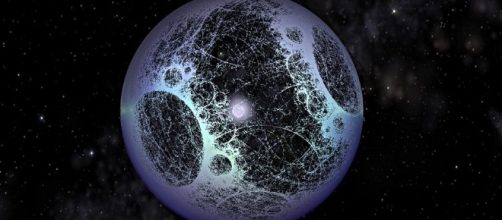A Dyson Sphere is a concept that first originated in a 1937 science fiction novel. The concept states that a highly advanced civilization would devise a way to not only harness the energy that a star discharges, but also devise a way to build a huge structure around that star to more directly harness its energy and use it to power society. Over 20 years later, a physicist by the name of Freeman Dyson proposed that the concept of this sphere could be a way to detect extraterrestrial life light-years away from Earth. The sphere was thus given the name, Dyson Sphere.
As of now, such a megastructure is not known to exist in our solar system.
The discovery of a Dyson Sphere
Meanwhile, 1,200 light-years away there is a star that has been making astronomers scratch their heads. The light that comes from this particular star, named KIC 8462852, fluctuates in an irregular pattern. This suggests that something very close to the star is blocking the light it gives off. There are theories as to why this is, but there is no conclusive evidence. Some believe it's black holes interfering with the light-waves, swarms of comets, or even space clouds. One scientist was bold enough to consider the possibility of the light being blocked by an incomplete Dyson Sphere.
Is life out there?
Now, such a theory seems far-fetched, but is it really so hard to believe? For any of the other explanations, a scientist could only speculate as to what is causing the dips in light coming from the star, so why should the theory of aliens be off the table as well? If there is a Dyson Sphere around KIC, it would be the discovery of the century, and perhaps for all of humanity.
However, astronomers are very skeptical of this theory, but until more is found out about KIC and what surrounds it, aliens are just as much a possibility as any other theory.
What if it isn't?
If the phenomenon turns out to be caused by nature, it could lead to the discovery of a brand-new concept in space; and it wouldn't be the first time for something like this to happen.
Back in 1968, an astronomer discovered rapidly pulsing Radio Waves that were labeled "LGM" (little green men) as they were thought to be caused by extraterrestrial life. After closer examination of the radio waves, scientists discovered that they were originating from spinning neutron stars, which we all now know as pulsars. So, the blocking of KIC could be caused by something natural in space that humans have yet to measure or even think of as a possibility. Until then, the Hubble telescope will be pointed toward the star in question, hoping to find some answers to this interstellar mystery.


